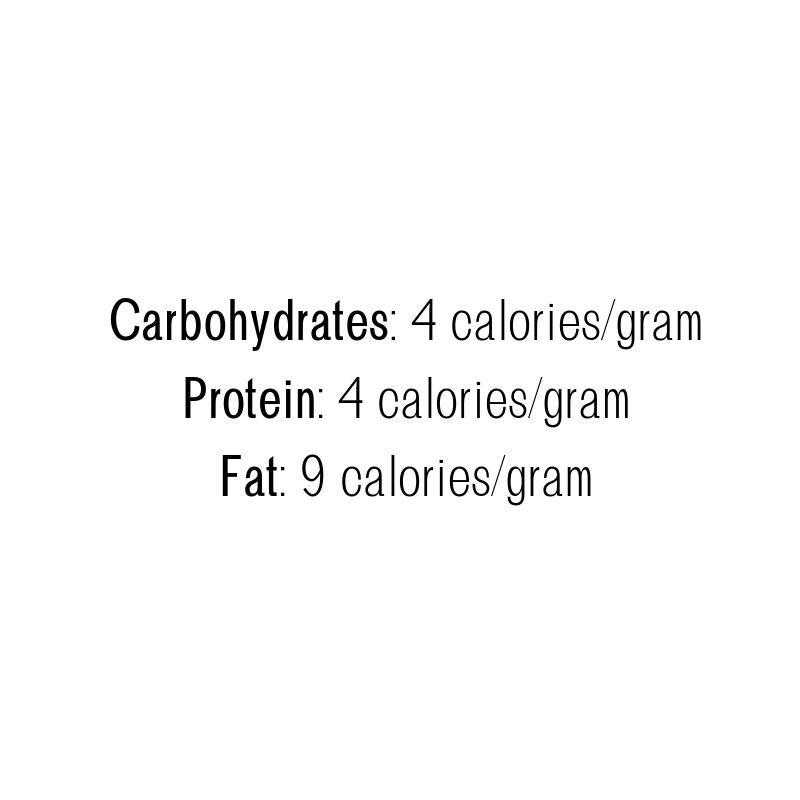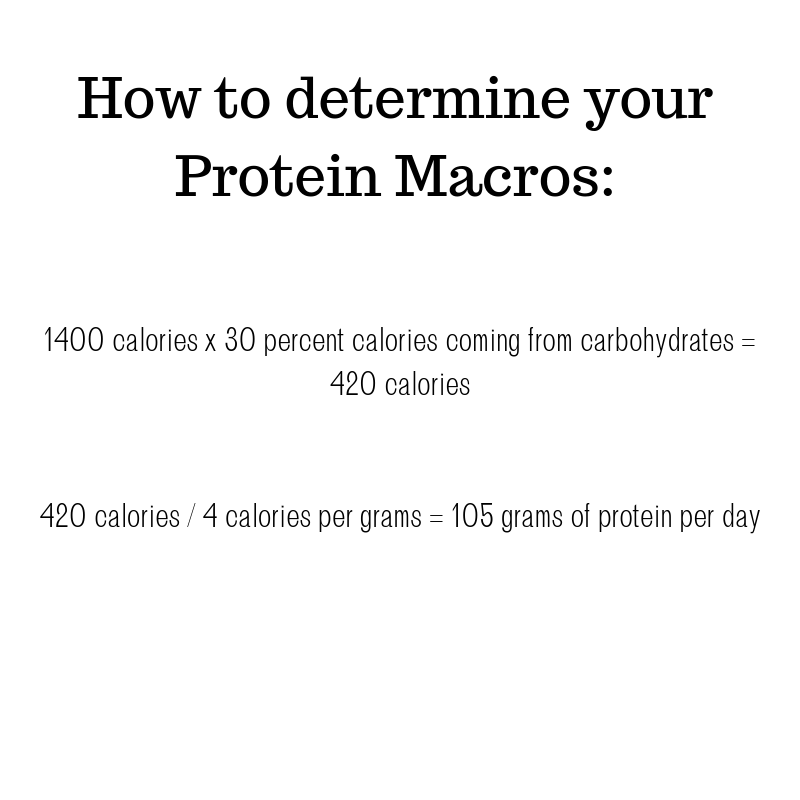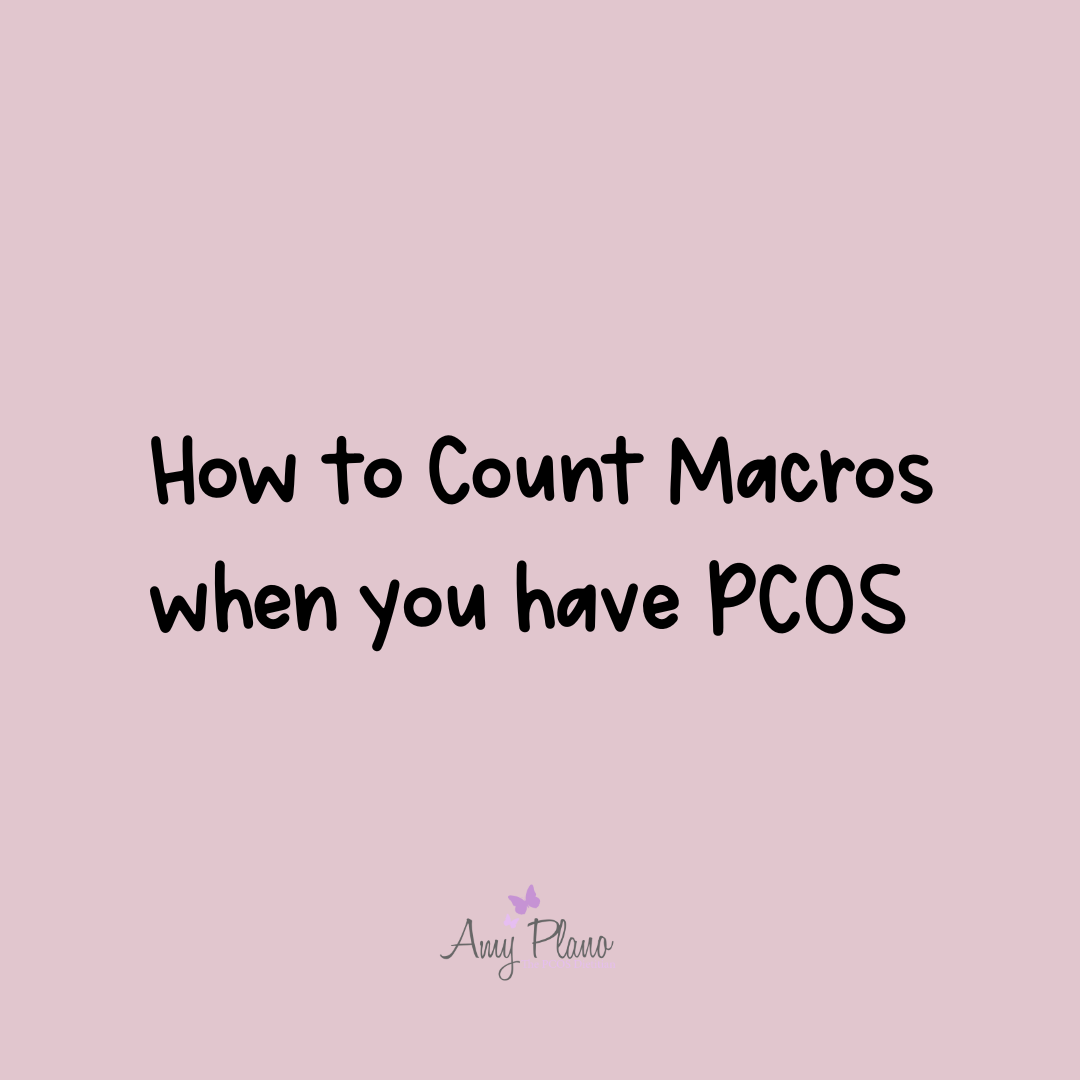How to Count your Macros when you have PCOS
Learning how to count your macros when you have PCOS is a hot topic! But, before I walk you through how to do this – I need to explain what the heck macros are in the first place. Macros or more properly known as macronutrients represent the amount of the three nutrients: carbohydrates, protein and fat you need to consume to reach to achieve your dietary goals. These values are expressed in grams and are all based on the amount of calories you consume daily.

In order to determine our macros when you have PCOS, you need to know how many calories you should be consuming. In addition, you need to know the percentage of each macronutrient you should be consuming daily. The PCOS Dietitian suggests the following breakdown:

So, basically when someone tells you they are, “Counting their macros,” this simply means they are counting and tracking the amount of carbohydrates, protein and fat they take in each day.
Calories
Before we determine how to count your macros when you have PCOS we need to talk a bit about calories. While everyone with PCOS has different dietary goals, most women are seeking weight loss. Therefore, for the premise of this blog, we are going to base the calories and macros on the short-term goal of weight loss.
However, as you can imagine determining your calories for weight loss when you have PCOS is not a simple process. Your calorie needs are just as unique as you are! Your calories for weight loss depend on many variables including your: age, gender, height, weight, body fat, physical activity level, type of job and even your sleep patterns. Therefore, I would highly recommend meeting with a Registered Dietitian who specializes in PCOS to either have your metabolism tested or just to obtain some guidance on how to determine your personalized calorie needs.
In order to illustrate how to count your macros when you have PCOS, we are going to use a calorie amount of 1,400 calories per day. This would likely be a good starting point for a 25 year old female who is 5 feet 4 inches, weighs 180 pounds, is around 30 percent body fat, works out 3 times per week doing cardio 30 minutes per session, has a sedentary desk job and gets around 5 to 6 hours per night of uninterrupted sleep. Once again, your needs will likely be different, but I am using 1400 calories to provide a concrete example of how to determine your macros.
Carbohydrates and PCOS
Not surprisingly, the majority of food we eat is typically made up of carbohydrates? Carbohydrates provide energy for the body. The two main types of carbohydrates – are simple carbs (SC) and complex carbs (CC). SC occur naturally in the foods we eat. They are foods like yogurt and milk products, fruit and honey. SC are also added to food when it is processed. Examples of foods with added SC include soft drinks, cookies, ice cream, most granola bars and candy. Conversely, CC are considered more nutrient dense as they contain more fiber, vitamins and mineral than SC. Complex carbohydrates include foods made from whole grains like rice and pasta as well as legumes (beans, lentils and peas) and starchy vegetables like corn and winter squash.
In our bodies SC break down very quickly. They enter the bloodstream almost immediately causing a spike in blood sugar. This in turn prompts a rapid increase in insulin. Consequently, eating too many SC can exacerbate the symptoms of PCOS by worsening IR and facilitating weight gain.
Conversely, complex carbohydrates can improve insulin resistance as they slowly release glucose allowing for optimal insulin regulation. Due to their slow absorption rate, CC promotes an increased sense of fullness and satiety. That is why I encourage the majority of your be complex carbohydrates.
How to Determine your Carbohydrates Macros when you have PCOS
When you have PCOS, I generally recommend keeping carbohydrates under 40 percent of your total calories. This would mean if you were following a 1,400 calorie diet, you would should be consuming 140 grams of carbohydrates or less per day.
How did I get to that number? Let’s take a look at my math.

Protein and PCOS
Protein is essential. It is pretty much required for every single structure and action in the body. Everything from your hair, nails, skins and bones to your ligaments, hormones and enzymes are composed of protein.
Protein is derived from animal foods like meat, poultry, pork, fish, seafood, eggs and dairy. Plant based proteins include legumes, nuts and soy.
Protein takes longer than carbohydrates to digest and confers a sense of satiety. Also, generally protein by itself doesn’t require much insulin to be processed. This is because protein is not converted to glucose. Hence, protein does not raise insulin like carbohydrates. That is why I often recommend including a small amount of protein with your meals and snacks. This helps stabilize blood sugar and improves your overall insulin response.
How to Determine your Protein Macros when you have PCOS
When you have PCOS, I generally recommend keeping carbohydrates at around 30 percent of your total calories. This would mean if you were following a 1,400 calorie diet, you would should be consuming around 105 grams of protein per day.
How did I get to that number? Let’s take a look at my math.
 Fat and PCOS
Fat and PCOS
You might be wondering exactly where fat fits into a healthy lifestyle for PCOS. Despite its demonization, fat is an important part of our diet. Fat supports and cushions our internal organs, helps to regulate body temperature, and allows for proper absorption of several vitamins. Fat also provides the building blocks for many of our sex hormones. Fats are found in a variety of food from butter and oils to dairy products, meats and processed foods.
The right types of fats when carefully consumed can help improve insulin levels. Like protein, dietary fat alone doesn’t require insulin because it doesn’t breakdown into glucose. It also helps keep us satisfied longer thereby reducing overeating. Fat also has the unique ability to provide an increased palatability and mouth feel carbohydrates and fat don’t.
However, in spite of its many awesome insulin-lowering qualities you can’t eat as much fat as want. In fact, diets high in certain types of fats can actually contribute to IR, heart disease, hypertension and certain types of cancers.
How to Determine your Fat Macros when you have PCOS
When you have PCOS, I generally recommend keeping fat at around 30 percent of your total calories. This would mean if you were following a 1,400 calorie diet, you would should be consuming 47 grams of fat per day.
How did I get to that number? Let’s take a look at my math.
 Conclusion
Conclusion
Everybody and their mother is counting macros these days and you can too! All you need to know is how many calories per day you need to consume to meet your dietary goals. Then you simply apply the percentages 40, 30 and 30 respectively for carbohydrates, protein and fat. Lastly, you divide these values by each nutrient’s calorie value to arrive at your macronutrient amount in grams. Therefore, using the example noted above for someone following a 1,400 calorie diet their macros would be as follows:

Diet is critical in effectively managing PCOS. The foods we consume have a significant impact on our hormones. Balancing your hormones is critical to having an optimal metabolism. Since it is obvious that the underlying cause of PCOS is hormonal imbalance, it is not surprising that diet can impact the symptoms and metabolic consequences of PCOS. Determining your macros when you have PCOS isn’t difficult it just takes a little math! Macro patterns like the ones discussed in this article that support lower insulin levels should be an integral part of healthy diet for PCOS.

